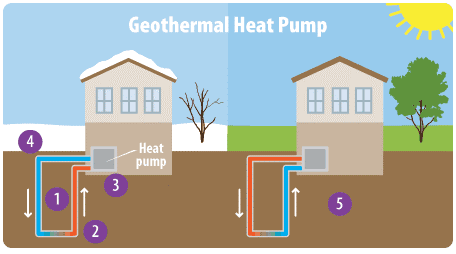If you were to dig a big hole straight down into the Earth, you would notice the temperature getting warmer the deeper you go. That’s because the inside of the Earth is full of heat. This heat is called geothermal energy. People, can capture geothermal energy through geothermal heat pumps, which tap into heat close to the Earth’s surface to heat water or provide heat for buildings.
Geothermal heat pumps can do all sorts of things – from heating and cooling homes to warming swimming pools. These systems transfer heat by pumping water or a refrigerant (a special type of fluid) through pipes just below the Earth’s surface, where the temperature is a constant 20 to 22˚C.
During the winter, the water or refrigerant absorbs warmth from the Earth, and the pump brings this heat to the building above. In the summer, some heat pumps can run in reverse and help cool buildings.
How it works:

LIMCEN engineers can fully consult you about this technology and how it best suits your building’s thermal needs.